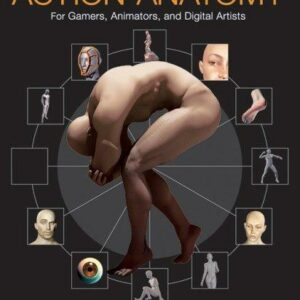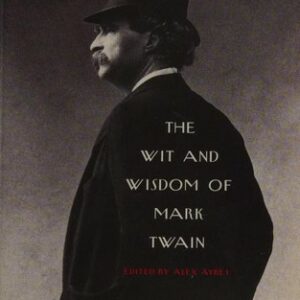Gone Tomorrow
$10.99
| Title | Range | Discount |
|---|---|---|
| Trade Discount | 5 + | 25% |
- Description
- Additional information
Description
#1 NEW YORK TIMES BESTSELLER • Don’t miss the hit streaming series Reacher!
“High-powered, intricately wrought suspense.”—Janet Maslin, The New York Times
New York City. Two in the morning. A subway car heading uptown. Jack Reacher, plus five other passengers. Four are okay. The fifth isn’t. And if you think Reacher isn’t going to get involved . . . then you don’t know Jack.
Susan Mark, the fifth passenger, had a big secret, and her plain little life was being watched in Washington, and California, and Afghanistan—by dozens of people with one thing in common: They’re all lying to Reacher. A little. A lot. Or just enough to get him killed. A race has begun through the streets of Manhattan, a maze crowded with violent, skilled soldiers on all sides of a shadow war. For Jack Reacher, a man who trusts no one and likes it that way, the finish line comes when you finally get face-to-face and look your worst enemy in the eye.
“Propulsive . . . [Child is] an expert at ratcheting up tension.”—Los Angeles Times
“Hold on tight. . . . This novel will give you whiplash as you rabidly turn pages. . . . May be [Lee Child’s] best.”—USA Today“The ever-resourceful and vengeful Reacher takes on nearly a score of the bad guys in an exciting climax to an enthralling book . . . complete with cover-ups and numerous intriguing twists.”—Library Journal (starred review)
“A superb New York novel . . . Child grounds his hero’s hard body and hard-drive brain in believable detail, and he sets the action against a precisely described landscape.”—Booklist (starred review)
“All good thriller writers know how to build suspense and keep the pages turning, but only better ones deliver tight plots as well, and only the best allow the reader to match wits with both the hero and the author. Bestseller Child does all of that in spades. . . . [He] sets things up subtly and ingeniously, then lets Reacher use both strength and guile to find his way to the exciting climax.”—Publishers Weekly (starred review)
Praise for the Jack Reacher series
“The truth about Reacher gets better and better. . . . This series [is] utterly addictive.”—Janet Maslin, The New York Times
“Jack Reacher is today’s James Bond, a thriller hero we can’t get enough of. I read every one as soon as it appears.”—Ken Follett
“Reacher is the stuff of myth. . . . One of this century’s most original, tantalizing pop-fiction heroes.”—The Washington Post
“I’m a fan.”—James Patterson
“The Reacher novels are easily the best thriller series going.”—NPR
“Reacher is a man for whom the phrase moral compass was invented: His code determines his direction. . . . You need Jack Reacher.”—The Atlantic
“I pick up Jack Reacher when I’m in the mood for someone big to solve my problems.”—Patricia Cornwell
“[A] feverishly thrilling series . . . You can always count on furious action.”—Miami HeraldLee Child is the author of more than two dozen New York Times bestselling Jack Reacher thrillers, with most having reached the #1 position, and the #1 bestselling complete Jack Reacher story collection, No Middle Name. Foreign rights in the Reacher series have sold in one hundred territories. A native of England and a former television director, Lee Child lives in New York City and Wyoming.Chapter One
Suicide bombers are easy to spot. They give out all kinds of tell-tale signs. Mostly because they’re nervous. By definition they’re all first-timers.
Israeli counterintelligence wrote the defensive playbook. They told us what to look for. They used pragmatic observation and psychological insight and came up with a list of behavioral indicators. I learned the list from an Israeli amy captain twenty years ago. He swore by it. Therefore I swore by it too, because at the time I was on three weeks’ detached duty mostly about a yard from his shoulder, in Israel itself, in Jerusalem, on the West Bank, in Leb anon, sometimes in Syria, sometimes in Jordan, on buses, in stores, on crowded sidewalks. I kept my eyes moving and my mind running free down the bullet points.
Twenty years later I still know the list. And my eyes still move. Pure habit. From another bunch of guys I learned another mantra: Look, don’t see, listen, don’t hear. The more you engage, the longer you survive.
The list is twelve points long if you’re looking at a male suspect. Eleven, if you’re looking at a woman. The difference is a fresh shave. Male bombers take off their beards. It helps them blend in. Makes them less suspicious. The result is paler skin on the lower half of the face. No recent exposure to the sun.
But I wasn’t interested in shaves.
I was working on the eleven-point list.
I was looking at a woman.
I was riding the subway, in New York City. The 6 train, the Lexington Avenue local, heading uptown, two o’clock in the morning. I had gotten on at Bleecker Street from the south end of the platform into a car that was empty except for five people. Subway cars feel small and intimate when they’re full. When they’re empty they feel vast and cavernous and lonely. At night their lights feel hotter and brighter, even though they’re the same lights they use in the day. They’re all the lights there are. I was sprawled on a two-person bench north of the end doors on the track side of the car. The other five passengers were all south of me on the long bench seats, in profile, side on, far from each other, staring blankly across the width of the car, three on the left and two on the right.
The car’s number was 7622. I once rode eight stops on the 6 train next to a crazy person who talked about the car we were in with the same kind of enthusiasm that most men reserve for sports or women. Therefore I knew that car number 7622 was an R142A model, the newest on the New York system, built by Kawasaki in Kobe, Japan, shipped over, trucked to the 207th Street yards, craned onto the tracks, towed down to 180th Street and tested. I knew it could run two hundred thousand miles without major attention. I knew its automated announcement system gave instructions in a man’s voice and information in a woman’s, which was claimed to be a coincidence but was really because the transportation chiefs believed such a division of labor was psychologically compelling. I knew the voices came from Bloomberg TV, but years before Mike became mayor. I knew there were six hundred R142As on the tracks and that each one was a fraction over fifty-one feet long and a little more than eight feet wide. I knew that the no-cab unit like we had been in then and I was in now had been designed to carry a maximum of forty people seated and up to 148 standing. The crazy person had been clear on all that data. I could see for myself that the car’s seats were blue plastic, the same shade as a late summer sky or a British Air Force uniform. I could see that its wall panels were molded from graffiti-resistant fiberglass. I could see its twin strips of advertisements running away from me where the wall panels met the roof. I could see small cheerful posters touting television shows and language instruction and easy college degrees and major earning opportunities.
I could see a police notice advising me: If you see something, say something.
The nearest passenger to me was a Hispanic woman. She was across the car from me, on my left, forward of the first set of doors, all alone on a bench built for eight, well off center. She was small, somewhere between thirty and fifty, and she looked very hot and very tired. She had a well-worn supermarket bag looped over her wrist and she was staring across at the empty place opposite with eyes too weary to be seeing much.
Next up was a man on the other side, maybe four feet farther down the car. He was all alone on his own eight-person bench. He could have been from the Balkans, or the Black Sea. Dark hair, lined skin. He was sinewy, worn down by work and weather. He had his feet planted and he was leaning forward with his elbows on his knees. Not asleep, but close to it. Suspended animation, marking time, rocking with the movements of the train. He was about fifty, dressed in clothes far too young for him. Baggy jeans that reached only his calves, and an oversized NBA shirt with a player’s name on it that I didn’t recognize.
Third up was a woman who might have been West African. She was on the left, south of the center doors. Tired, inert, her black skin made dusty and gray by fatigue and the lights. She was wearing a colorful batik dress with a matching square of cloth tied over her hair. Her eyes were closed. I know New York reasonably well. I call myself a citizen of the world and New York the capital of the world, so I can make sense of the city the same way a Brit knows London or a Frenchman knows Paris. I’m familiar but not intimate with its habits. But it was an easy guess that any three people like these already seated on a late-night northbound 6 train south of Bleecker were office cleaners heading home from evening shifts around City Hall, or restaurant service workers from Chinatown or Little Italy. They were probably set for Hunts Point in the Bronx, or maybe all the way up to Pelham Bay, ready for short fitful sleeps before more long days.
The fourth and the fifth passengers were different.
The fifth was a man. He was maybe my age, wedged at forty-five degrees on the two-person bench diagonally opposite me, all the way across and down the length of the car. He was dressed casually but not cheaply. Chinos, and a golf shirt. He was awake. His eyes were fixed somewhere in front of him. Their focus changed and narrowed constantly, like he was alert and speculating. They reminded me of a ballplayer’s eyes. They had a certain canny, calculating shrewdness in them.
But it was passenger number four that I was looking at.
If you see something, say something.
She was seated on the right side of the car, all alone on the farther eight-person bench, across from and about halfway between the exhausted West African woman and the guy with the ball player’s eyes. She was white and probably in her forties. She was plain. She had black hair, neatly but unstylishly cut and too uniformly dark to be natural. She was dressed all in black. I could see her fairly well. The guy nearest to me on the right was still sitting forward and the V-shaped void between his bent back and the wall of the car made my line of sight uninterrupted except for a forest of stainless-steel grab bars.
Not a perfect view, but good enough to ring every bell on the eleven-point list. The bullet headings lit up like cherries on a Vegas machine.
According to Israeli counterintelligence I was looking at a suicide bomber.
Chapter Two
I dismissed the thought immediately. Not because of racial profiling. White women are as capable of craziness as anyone else. I dismissed the thought because of tactical implausibility. The timing was wrong. The New York subway would make a fine target for a suicide bombing. The 6 train would be as good as any other and better than most. It stops under Grand Central Terminal. Eight in the morning, six at night, a crowded car, forty seated, 148 standing, wait until the doors open on packed platforms, push the button. A hundred dead, a couple of hundred grievously injured, panic, infrastructure damage, possibly fire, a major transportation hub shut down for days or weeks and maybe never really trusted again. A significant score, for people whose heads work in ways we can’t quite understand.
But not at two o’clock in the morning.
Not in a car holding just six people. Not when Grand Central’s subway platforms would hold only drifting trash and empty cups and a couple of old homeless guys on benches.
The train stopped at Astor Place. The doors hissed open. No one got on. No one got off. The doors thumped shut again and the motors whined and the train moved on.
The bullet points stayed lit up.
The first was the obvious no-brainer: inappropriate clothing. By now explosive belts are as evolved as baseball gloves. Take a three-foot by two-foot sheet of heavy canvas, fold once longitudinally, and you have a continuous pocket a foot deep. Wrap the pocket around the bomber, and sew it together in back. Zippers or snaps can lead to second thoughts. Insert a stockade of dynamite sticks into the pocket all the way around, wire them up, pack nails or ball bearings into the voids, sew the top seam shut, add crude shoulder straps to take the weight. Altogether effective, but altogether bulky. The only practical concealment, an oversized garment like a padded winter parka. Never appropriate in the Middle East, and plausible in New York maybe three months in twelve.
But this was September, and it was as hot as summer, and ten degrees hotter underground. I was wearing a T-shirt. Passenger number four was wearing a North Face down jacket, black, puffy, shiny, a little too large and zipped to her chin.
If you see something, say something.
I took a pass on the second of the eleven points. Not immediately applicable. The second point is: a robotic walk. Significant at a checkpoint or in a crowded marketplace or outside a church or a mosque, but not relevant with a seated suspect on public transportation. Bombers walk robotically not because they’re overcome with ecstasy at the thought of imminent martyrdom, but because they’re carrying forty extra pounds of unaccustomed weight, which is biting into their shoulders through crude suspender straps, and because they’re drugged. Martyrdom’s appeal goes only so far. Most bombers are browbeaten simpletons with a slug of raw opium paste held between gum and cheek. We know this because dynamite belts explode with a characteristic doughnut-shaped pressure wave that rolls up the torso in a fraction of a nanosecond and lifts the head clean off the shoulders. The human head isn’t bolted on. It just rests there by gravity, somewhat tied down by skin and muscles and tendons and ligaments, but those insubstantial biological anchors don’t do much against the force of a violent chemical explosion. My Israeli mentor told me the easiest way to determine that an open-air attack was caused by a suicide bomber rather than by a car bomb or a package bomb is to search on an eighty-or-ninety-foot radius and look for a severed human head, which is likely to be strangely intact and undamaged, even down to the opium plug in the cheek.
The train stopped at Union Square. No one got on. No one got off. Hot air billowed in from the platform and fought the interior air conditioning. Then the doors closed again and the train moved on.
Points three through six are variations on a subjective theme: irritability, sweating, tics, and nervous behavior. Although in my opinion sweating is as likely to be caused by physical overheating as by nerves. The inappropriate clothing, and the dynamite. Dynamite is wood pulp soaked with nitroglycerine and molded into baton-sized sticks. Wood pulp is a good thermal insulator. So sweating comes with the territory. But the irritability and the tics and the nervous behavior are valuable indicators. These people are in the last weird moments of their lives, anxious, scared of pain, woozy with narcotics. They are irrational by definition. Believing or half-believing or not really believing at all in paradise and rivers of milk and honey and lush pastures and virgins, driven by ideological pressures or by the expectations of their peers and their families, suddenly in too deep and unable to back out. Brave talk in clandestine meetings is one thing. Action is another. Hence suppressed panic, with all its visible signs.
Passenger number four was showing them all. She looked exactly like a woman heading for the end of her life, as surely and certainly as the train was heading for the end of the line.
Therefore point seven: breathing.
She was panting, low and controlled. In, out, in, out. Like a technique to conquer the pain of childbirth, or like the result of a ghastly shock, or like a last desperate barrier against screaming with dread and fear and terror.
In, out, in, out.
Point eight: suicide bombers about to go into action stare rigidly ahead. No one knows why, but video evidence and surviving eyewitnesses have been entirely consistent in their reports. Bombers stare straight ahead. Perhaps they have screwed their commitment up to the sticking point and fear intervention. Perhaps like dogs and children they feel that if they’re not seeing anyone, then no one is seeing them. Perhaps a last shred of conscience means they can’t look at the people they’re about to destroy. No one knows why, but they all do it.
Passenger number four was doing it. That was for sure. She was staring across at the blank window opposite so hard she was almost burning a hole in the glass.
Points one through eight, check. I shifted my weight forward in my seat.
Then I stopped. The idea was tactically absurd. The time was wrong.
Then I looked again. And moved again. Because points nine, ten, and eleven were all present and correct too, and they were the most important points of all.US
Additional information
| Weight | 10.8 oz |
|---|---|
| Dimensions | 1.3000 × 4.2100 × 7.4800 in |
| Imprint | |
| Format | |
| ISBN-13 | |
| Author | |
| Audience | |
| BISAC | |
| Subjects | lee child books, suspense thriller books, action and adventure, crime books, vigilante, mystery thriller suspense, best sellers list new york times, new york times best sellers, thriller series, suspense books, lee child jack reacher series, lee child, jack reacher books, jack reacher, Jack Reacher series, jack reacher books in sequence, lee childs, vigilante justice, murder, crime, thriller, military, detective, action, suspense, mystery, afghanistan, adventure, FIC002000, FBI, thrillers, mysteries, FIC031050, CIA, mystery books, thriller books |











